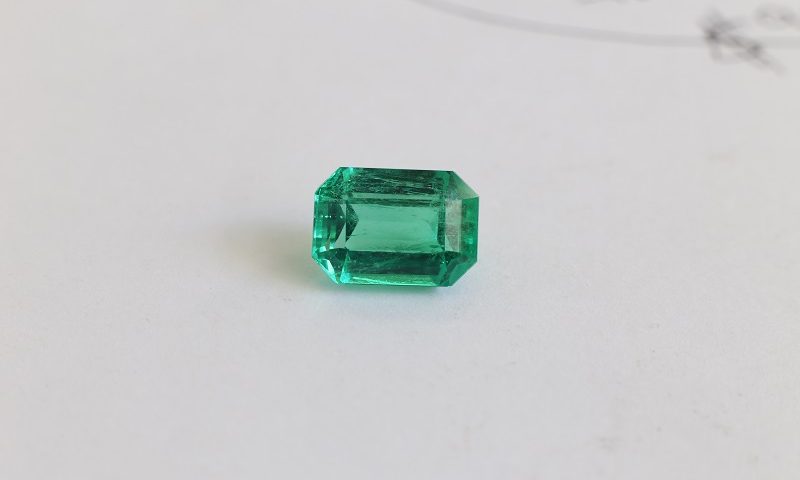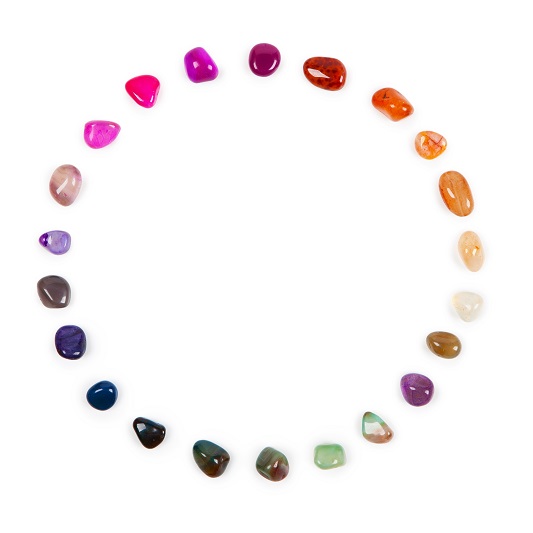Paraiba gemstone

Tanzanite gemstone
27th October 2017
Gemstone of the Week: Spinel
3rd November 2017Paraiba Tourmaline, often just referred to as Paraiba, is one of the many varieties of tourmaline available for purchase today. With related stones including Pink Tourmaline, Rubellite, Indicolite, and Green Tour-maline, Paraiba itself is one of the rarest, most sought-after types of Tourmaline on the market today. Boasting a unique glow that many describe as neon in appearance, the precious gemstone is highly desir-able amongst jewellers worldwide. In this article, we will be exploring Paraiba in more detail, discussing how to identify the stone, the various colours it can appear in, and the healing benefits that the gem holds.
How to Identify Paraiba
Like most gemstones, there is an array of stones out there similar in appearance to Paraiba. So how do you identify it from the crowd? Interesting, the stone is actually simple to distinguish. First of all, consider looking for a turquoise colour with small flashes of green. Formed through traces of copper, Paraiba boasts a beautiful aqua colour, which also exhibits small green flashes when exposed to a bright light. As this property is fairly unique, this is seen as being one of the easiest ways for a non-expert to identify Paraiba Tourmaline.
For those who are hoping to distinguish Paraiba from other stones, it is advised to view the gem in various different lights. Due to the lustrous shine of the stone, they usually emit some form of sparkle, even in dim light; while diamonds and other expensive crystals also do this, it is uncommon for a brightly coloured stone to have this property.
If the stone is up for sale, try a method as simple as checking the price tag. Due to the turquoise stone being so rare, they usually carry with them a hefty price tag. Paraiba is so rare that it is uncommonly found in the average jewellery store. If you do find one, though, expect to pay upwards of five figures per carat for a good-quality piece of gemstone jewellery. If you come across a potential Paraiba stone in a jewel-lery store, consider enquiring whether the stone has been burned. While Paraiba is a naturally forming gem, part of the cutting process typically includes heating or ‘burning’ the stone, to get rid of any reddish hues. If the jeweller replies that the stone hasn’t been burnt, you are probably not looking at a piece of Paraiba.
Different Colours and Types of Paraiba
Popular because of its intense blue colouring, Paraiba is found in an array of different hues. Depending on the level of copper oxide present in the stone, the gem can appear in various different colours including sea blue, aqua, mint green and even violet. The colour is also known to vary depending on where in the world the stone was sourced. Paraiba mined in Brazil is typically less than a single carat in size, with its col-our ranging from yellowish green to a deep fluorescent blue.
Paraiba found in Africa is usually larger in size. With many of the stones weighing in at over 5 carats, Africa is seen as being one of the favourable mining spots. Due to the larger size, pieces of African Paraiba are usually more similar in colour than stones found in Brazil; most of the stones found in this location tend to hold a standard turquoise hue.
Where is Paraiba Found?
When first discovered in 1989, Paraiba was initially found in the Brazilian state of Paraiba. Stumbled across by a mine named Heitor Barbosa, the founder had worked in the same mine for over 5 years before find-ing the first pieces of the rare gemstone. The vivid, almost neon appearance, had never been seen be-fore in a gemstone, making Paraiba Tourmaline valuable and sought after right from the get-go.
For many years, the stone was only found in the location of first discovery, leading to the stone being named Paraiba after it’s place of origin. As the years past, the gem began to be found in various locations around the world including Nigeria and Mozambique; in 2006, Laboratory Manual Harmonization Commit-tee agreed that even the stones found outside of Paraiba, Brazil should have the same name, deciding that the name ‘Paraiba’ should refer to the variety of Tourmaline rather than indicating the origin.
Healing Properties of Paraiba
Paraiba Tourmaline boasts an array of healing properties, both physically and emotionally. Thought to connect on with the angels of truth and wisdom, the stone is known for encouraging compassion for the beholder and the planet. Invoking an increased state of consciousness, the gem is believed to encourage one to be of service to humanity, promoting an element of selfless behaviour. Thought to protect the beholder from pollutants of various nature, the stone is believed to act as a barrier to physically pollutants in addition to emotional, mental, spiritual, and environmental ones, too.
Helping to calm and relax the mind, Paraiba is ideal for using within meditation. With the added benefits of aligning the chakras, use the gem while you meditate to encourage the good health of the body and mind. Physically, Paraiba is thought to aid hay-fever, helping to sooth the throat and eyes. Additionally, the gemstone is great for those that suffer from IBS, helping to aid the discomfort of painful stomach cramps.
In Summary
Whether you are interested in splashing out of Paraiba as beautiful piece of high-end jewellery, admiring it for the neon turquoise light it exhibits, or you’re thinking about using the stone for its healing proper-ties to provide instant relief from hay-fever in the summer months, the sought after gemstone can pro-vide numerous benefits, if you are lucky enough to get your hands on one.




